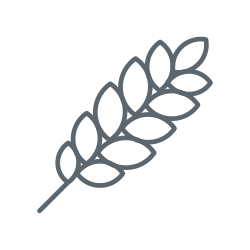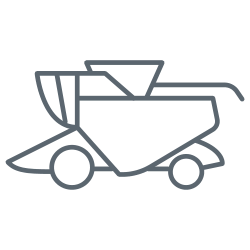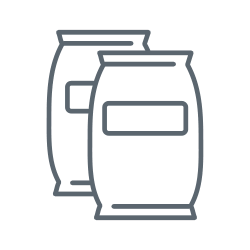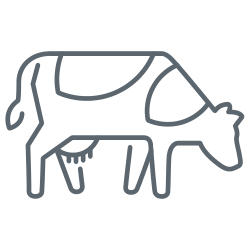Mycotoxins are hidden thieves, and likely to be responsible for numerous undiagnosed health issues in farmed livestock worldwide. For most livestock producers, the result of mycotoxin presence is more likely to be seen as a chronic issue that occurs over a longer period of time, but may not always result in acute symptoms. Mycotoxins impair optimum livestock performance by affecting intestinal, organ and immune systems – which in turn has a subsequent negative impact on farm profitability.
Keep ahead of the threat
Stay up to date with the latest mycotoxin information by signing up to our newsletter

What Are Mycotoxins?
Mycotoxins are natural substances produced by moulds and fungi. They are invisible, stable and toxic chemical compounds. Mycotoxins are common in the farm environment – surviving in many places and on many different types of feed sources.
More than 500 different mycotoxins have been identified to date and most animal feedstuffs are likely to be contaminated with multiple mycotoxins.
The growth of moulds, and mycotoxin production, are most encouraged by environmental conditions such as temperature (hot/cool) and moisture (wet/dry). However, mycotoxins can also be produced by moulds when other stress conditions occur to the host plant or the mould.
Ever present in the farm environment and a potential threat to the productivity of even the best-run livestock production operations, mycotoxin contamination should now be on every feed producer and farmer’s radar.
Why is the control of mycotoxins so important?
Animal productivity and farm profitability
Safer and healthier food for consumers
With ever-increasing demands from the end consumer, and the growing concern surrounding food quality, animal feed safety has become a significant topic in agriculture. There is increasing pressure throughout the supply chain to ensure clean and safe feed for animals, which helps to deliver a safer and healthier supply of food for consumers. It is increasingly clear that an effective mycotoxin control program is vital to protect the health and wellbeing of both animals and the consumer.
Almost 90% of mycotoxin contamination is found to develop in crops pre-harvest, highlighting the importance of effective crop management in reducing the mycotoxin risk.
Alltech believes that effective mycotoxin management is about seeing the whole challenge; from the farm to the feed mill, and from risk assessment to feed management. To effectively manage the inevitability of feed mycotoxin contamination, it is crucial to understand the level of mycotoxin challenges so that the right steps can be taken to mitigate any adverse effects on animal performance, production efficiency and food safety.
Using a combination of powerful management tools, the Alltech® Mycotoxin Management program provides a complete, cutting edge, global solution to help producers take control of mycotoxin contamination and protect their business. The program is built around next-generation risk identification technology, data analysis and insights and mycotoxin binder solutions that are designed to reduce the damaging effects of mycotoxins on animal health and production potential.
Factors influencing mold and mycotoxin development pre and post harvest
Planting
- Crop Variety
- Seed treatment
- Planting date
- Tillage practices
- Previous crop

Crop development
- Temperature/humidity
- Moisture
- Fungicide/foliar application
- Insect damage

Harvesting
- Harvest date
- Crop maturity
- Temperature
- Crop moisture
Crop storage
- Grain drying
- Moisture presence
- Aeration
- Forage consolidation
- Storage length
- Use of mould inhibitors

Feed manufacture
- Detection/diversion
- Ingredient segregation

Delivery to animals
Adapted from Bryden et al. 2011







